Home > Appliances and Equipment >
> Air-conditioning > Indirect Evaporative Pre-cooling of Primary Air
APPLIANCES AND EQUIPMENT
Indirect Evaporative Pre-cooling of Primary Air
Principle
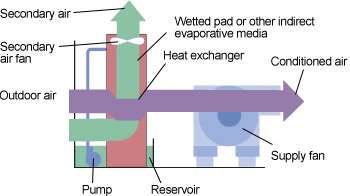
Indirect evaporative cooling take advantage of evaporative cooling effects, but cool without raising indoor air humidity. Usually, two airstreams are involved – the air supplied to the indoor spaces and a secondary stream that is exhausted outside. In operation, an indirect evaporative process cools air or water on one side of an impermeable heat-exchange surface such as a thin plastic plate or tube. The wet side cools the dry side without adding moisture (because there is no direct contact between the water and the airstream to be cooled).
Indirect Evaporative Cooling Heat Exchanger
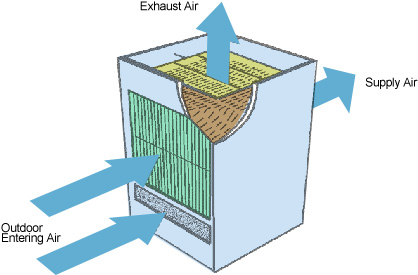
Indirect Evaporative Cooling System
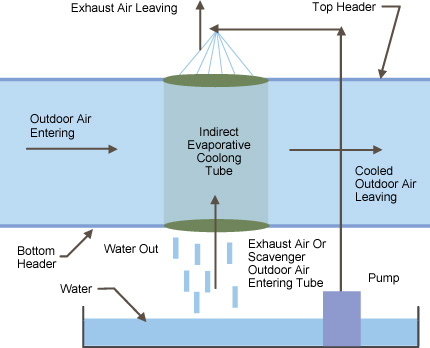
Indirect Evaporative Cooling System
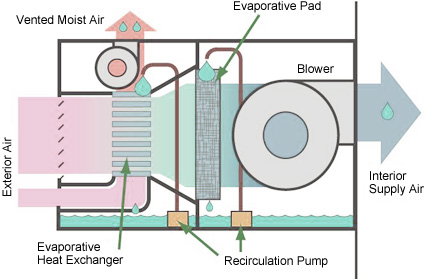
Application
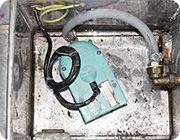
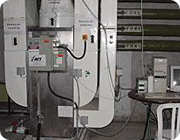
Indirect Evaporating Pre-cooling of Primary Air: Module Unit
Reference:
- [1] Chengqin Ren, Hongxing Yang. An analytical model for the heat and mass transfer processes in indirect evaporative cooling with parallel/counter flow configurations. International Journal of Heat and Mass Transfer: 49(2006), 617–627.
- [2] Hongxing Yang, Chengqin Ren, Ping Cui. Study on Performance Correlations of an Indirect Evaporative Cooler with Condensation from Primary Airflow. HVAC&R Research:12(3), 2006.519 – 532.
- [3] ASHRAE Handbook 2008 – HVAC Systems and Equipment